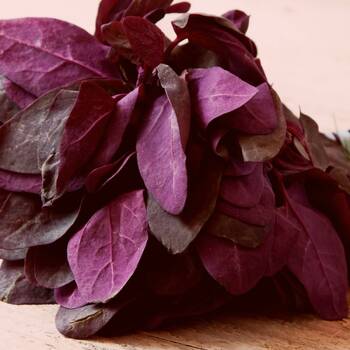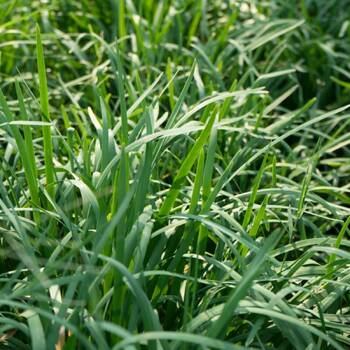Seeds included in 'Vegetables | Tropical Climate | Summer 2023' Seed Subscription:
 |
Capsicum- Golden Californian Wonder (Capsicum annuum)Capsicum is also known as "Sweet Pepper". Plants produce bell-like fruit that can be picked green or matured to a unique golden orange colour. Sweet flavour, ideal for salads. Can be eaten raw or cooked. Can be grown in containers. |
 |
Chilli- Bulgarian Carrot (Capsicum annuum)Vibrant orange, carrot-shaped Bulgarian peppers, up to 10cm. Medium heat with a sweet fruity flavour. Traditionally roasted or used in chutneys, salsas. Also known as "Shipkas". |
 |
Squash- Cucuzza (Lagenaria siceraria)An Italian gourd-like variety, eaten as a summer squash. Vigorous vines produce pale green, creamy white fleshed fruit. Young fruit tastes like zucchini, suitable for sautéing, grilling, pickling. Mature ones can be roasted or used in soup. |
 |
Okra- Clemson's Spineless (Abelmoschus esculentus)Annual growing to 100cm. Long, dark green, spineless pods best harvested when around 7-10cm long. Heavy producing. Pods can be used fresh or dried, most commonly used in soups and stews. Also known as "Gumbo". |
 |
Orach- Fire Red (Atriplex hortensis)Ancient leafy veg, a spinach substitute with similar taste. Dark purple/red leaves, eaten fresh or cooked. Ideal for stir-fry. Harvest whole at 30cm or pick leaves as needed. Heat tolerant, slow to bolt, poor soil tolerant. |
 |
Malabar Spinach- Green (Basella alba)Malabar spinach, a frost-tender perennial vine, is grown as an annual in cooler climates. It has soft stems, succulent leaves, and is a vigorous climber. The leaves resemble true spinach and are used as a substitute in salads and as a leaf vegetable. |
 |
Eggplant- Rosita (Solanum melongena)A 1940s Puerto Rican heirloom eggplant variety. Teardrop-shaped, lavender pink fruit with white shoulders. Grows to 120cm, prolific in hot climates. Sweet, mild white flesh with late-developing seeds. Tender skin. |
 |
Mustard Greens- Chirimen Hakarashi (Brassica juncea)Annual green vegetable with round stalks, curled leaves with serrated edges. Japanese variety, spicy flavour intensifies with maturity. Can be eaten raw or cooked. Ideal for microgreens, baby leaf. Easy, quick to grow. |
 |
Rockmelon- Honeydew (Cucumis melo)Summer vine fruit. Large round fruit growing to 20cm. Cream/white skin with thick, lime green flesh. Sweet flavour. Stores well. |
 |
Garlic Chives (Allium tuberosum)Perennial plant up to 50cm. Grows in clumps with long green leaves and white star flowers. Tastes like a mix of chives and garlic. Can be eaten raw or cooked; good in salads, sauces, stir-fries, and with fish, poultry, and eggs. Can be container-grown. |
Summer Gardening
Tips for gardening in summer:
- Watering: Learn when to water by using your index finger to check soil moisture. Scratch back a little of the surface soil and use your finger to see if soil is moist about 5cm below the surface; if it’s on the dry side, it’s time to water. Learn more here.
- Crop protection: As fruit and veggies develop they may need protection from burrowing insects, fruit fly, birds, possums or bats. Berries, fruit trees and soft fruit like tomatoes are especially at risk. Use insect exclusion netting, bird netting or fruit protection bags to protect crops. Ensure your netting is pegged or tied securely at the bottom to stop pests getting in.
Pests and diseases to look out for in summer:
- Aphids: Small, sap-sucking insects that congregate on the new shoots or the underside of leaves. They can cause leaves to wilt or become discoloured, and also excrete honeydew which can attract ants and other insect pests. To manage aphids, remove them by spraying with a garden hose, apply a soap or alcohol spray, or encourage predatory insects to your garden. Learn more.
- Whitefly: A sap-sucking insect related to aphids, whitefly are found in large numbers on the underside of leaves, and will swarm in clouds when disturbed. Plants may have yellowing leaves or may wilt, and growth will be slowed. Whitefly can be removed with a garden hose or sprayed with soap spray. Badly affected plants should be destroyed. Learn more.
- Fungal diseases: The combination of warm temperatures and summer humidity can form the perfect conditions for fungal diseases to spread. Water plants in the morning at ground level, avoiding wetting foliage wherever possible. Prune off affected foliage, space plants to allow more airflow, and treat fungal outbreaks with homemade or purchased sprays.
